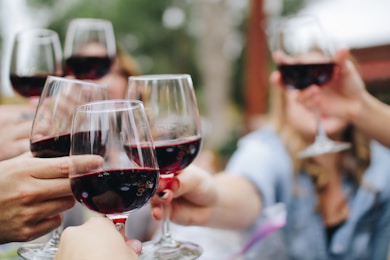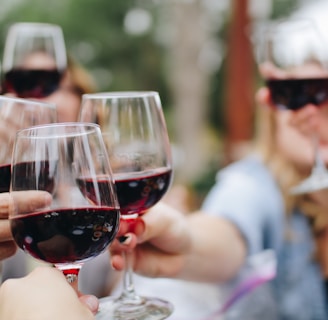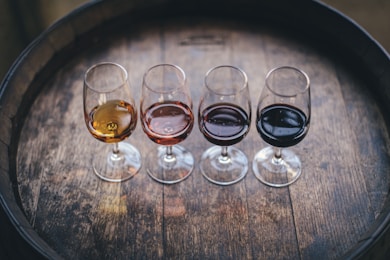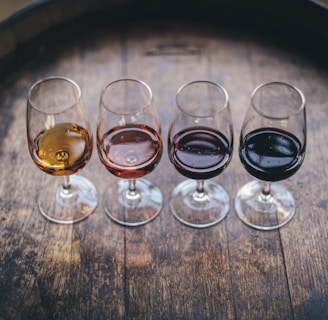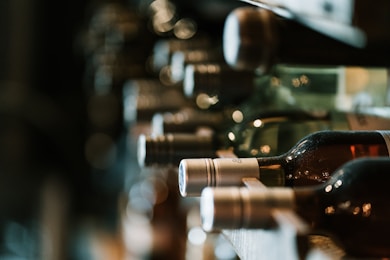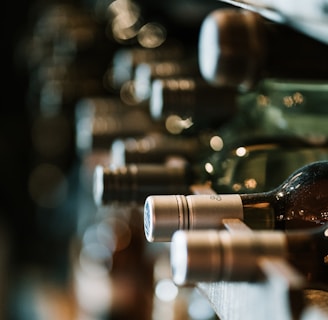
Uncorked Collective
OUR STORY
Quantity, and quality
We kicked off Uncorked Collective because, let's face it, we were completely clueless about wine and tired of nodding along at tastings. After diving headfirst into a sea of grapes, regions, and vintages, we've emerged with a treasure trove of vino knowledge. Now, we're here to spill all that juicy info, making the world of wine a little less intimidating and a lot more fun for everyone else!
So welcome to the no-BS sanctuary where wine novices and aficionados alike can amp up their wine game. Tired of feeling lost in a sea of snooty sommeliers? Bored of basic booze blabber? Buckle up, buttercup – we're about to school you on everything from the lush vineyards of Tuscany to the underground cellars of Bordeaux, and we're doing it with a twist of '90s flair and a sprinkle of sports legend.
At Uncorked Collective, we’re all about cutting through the pretentious wine fog. We aim to make you sound like a wine wizard, whether you're navigating a fancy wine list on a first date or hustling through the wine aisle on a Friday night. We're here to dish out the juicy details on wine regions, demystify those perplexing rating systems, and dive deep into winery histories, all while keeping it light, fun, and a tad irreverent.
So, whether you're looking to impress your boss with a killer wine recommendation or just aiming to outsmart that wine-know-it-all friend at your next dinner party, Uncorked Collective has your back. Let's pop some corks and pour out the knowledge – because life's too short to drink bad wine. Cheers to becoming your group's wine champ!
The Basics
Uncork the essentials
Varietal: Know your characters. Just like recognizing whether you're dealing with a Joey or a Chandler, knowing your grape types (like Chardonnay, Merlot, or Sangiovese) is crucial. Each varietal comes with its own set of flavor profiles and tendencies.
Terroir: This is the setting of our sitcom—the environment where the grapes grow, including the soil, climate, and topography. Like a good plot twist, terroir can dramatically influence the flavor and quality of the wine.
Vintage: This isn’t about thrift store shopping; it’s the year the grapes were harvested. It can tell you about the weather conditions during the growing season, which can greatly affect the final product, kind of like how a season finale feels different depending on what went down that year.
Tasting Notes: This is where your inner critic comes out. Describing wine involves your senses—looking at the color and clarity, sniffing the aromas, and savoring the flavors. Terms like fruity, earthy, oaky, and tannic are part of the wine buff’s lingo.
Body: This refers to how the wine feels in your mouth. Is it light and refreshing like a sitcom, or rich and complex like a drama? Wine body ranges from light to full and is influenced by alcohol level, sugar content, and concentration.
Acidity: Wines with higher acidity feel more tart and zesty (think lemony fresh), whereas low-acid wines feel smoother. Acidity adds freshness and can make you want to take another sip—or watch another episode.
Sweetness: This can range from bone dry (no perceived sugars) to sweet (like a rom-com’s happy ending). Sweetness is often a result of residual sugar left after fermentation.
Tannins: These are compounds that add bitterness and astringency to a wine, much like a dark plot adds depth to a story. Tannins are mostly found in red wines and contribute to their structure and longevity.
Finish: After you swallow, what flavors linger? The finish can be short-lived or long and complex, echoing the aftertaste of a particularly memorable scene.
